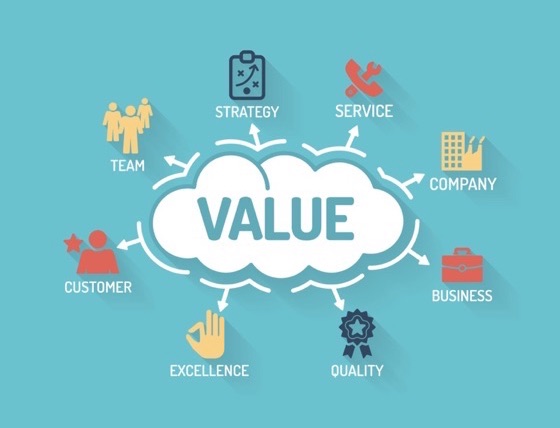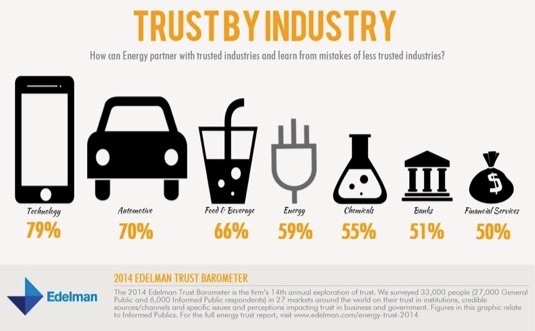When it comes to attracting and retaining B2B customers, the biggest push is on creating value. We know B2B customers buy value – in the form of convenience, simplicity or integration.
But what exactly is value and is it something that can be created? Once it is created, can it be maintained or built upon – especially in the face of fierce competition? Let’s take a closer look:
What Motivates Customers to Buy?

Thanks to psychological insights and shopping habits, we’ve narrowed down customer buying behavior into five distinct areas. These are particularly important for B2B markets since these customers are keenly aware of and interested in anything that gives them an edge or adds to their success. The five areas defined by value can be broken down as:
- Response – The knowledge that someone understands your problem and is ready to solve it
- Service – The ability to clearly spell out the details while eliminating all of the risk (or perceived risk). Can also affect the credibility and trustworthiness of the company depending on how well they handle service-related needs.
- Quality – A consistent formula that results in well-made products or services that help the customer achieve their goal(s)
- Price – An assigned value that’s clear, practical and competitive
- Time – The product or service is dependable, has a sensible learning curve, demonstrates clear return on investment in a shorter period
But here’s the issue – B2B customers aren’t going to tell you what they want.
It’s possible that they don’t even know, or can’t articulate it in a way that you can easily turn it into a solution. But either way they’re not going to spell it out for you. They don’t have the time, expertise or desire to do so. But the good news is that all of these categories can be measured. And as we like to say here at Kissmetrics, “if it can be measured, it can be improved.”
You Are More than Your Product or Service

Many companies will throw everything behind their product or service – insomuch as they become the brand. You can tell if this strategy is in play by the way they advertise, i.e. “We pride ourselves on excellent service.” Or “We pride ourselves on the highest quality standards.”
But it pays to remember that you are not your product. If you funnel too much of your attention into the product and forget everything else, you’ll find that these five pillars of B2B Value success will start to crumble.
And that happens because of all of the things you do to create that value in the first place. For instance, your company might:
- Work with suppliers to provide safety training or one-on-one demonstrations to show how your product works for best results.
- Conduct ongoing customer focus groups to brainstorm new, value-added upgrades that enhance your flagship product
- Have won highly-acclaimed awards or received certifications that further cement your qualifications, service or ability to deliver as promised.
All of these things add to the core value of the product, making it so much more. Companies that fail to demonstrate the benefits of these things in ways that customers can understand and appreciate will find themselves hard-pressed to justify the value of their product – particularly where price is concerned.
Notice that there’s one (very important) factor I’ve left out of the value puzzle – trust. Trust supersedes all of the other motivations in this list – however, it’s not something that can be outwardly measured. If you don’t have the customer’s attention, you can build up all of the other facets as much as you like, and you’ll get absolutely nowhere with them. But building trust centers on ensuring that you have the rest of the factors presented in a way that’s relatable, understandable and most importantly, actionable.

So Why Is So Much of “Creating Value” Focused on the Price?
A lot of discussions about creating value center on price – but this perspective is misleading at best. The truth is, all of the other four facets of value-building: response, time, quality and service, make it possible to justify the price. If the customer isn’t on board with any one of them, you’ll have a hard time closing the sale.

So how to you make sure that the customer doesn’t simply hinge on price? Follow these steps:
Discover What the Customer is Willing to Pay For
Notice I didn’t say “discover what the customer is willing to pay”. You can uncover a great deal about what a customer values by simply talking to them. They’ll make it abundantly clear if you ask the right questions, especially where previous vendors are concerned. Everything from technical support and training to white-label options is on the table here, and when you find a collection of things that’s high on their priority list, you can:
Hit All the Right Buttons
B2B buying decisions are rarely made by one person. You’ll need to have the whole C-suite, marketing, sales and other executive members of the team on board – and all of them value different things. Don’t hesitate to demonstrate how your product or service can affect a priority of the marketing department, save hours of time for sales and otherwise provide demonstrable ROI to the C-suite. With this in mind, perhaps most importantly, you should:
Sell the Results, Not the Features
Don’t just tell them about the benefits, let them envision the outcomes for themselves. Always remember that the first use of your product or service is in your customer’s mind. When you can communicate the ROI they get in real, measurable ways – whether that return is in profits, time saved or anything else the customer values, you’ll have their attention and most likely their name on the client roster.
Never Stop Improving
Finally, even if you’ve created a fine-tuned money-printing Value Machine, your work is still not done. Even though you’re not competing purely on price, if a competitor can demonstrate that they provide similar (or superior) benefits at a lower price, you’ll find yourself on the defense. In order to continually outperform the competition, it pays to have a finger on the pulse of not only trends within your industry, but trends within your customers’ industries as well.
Now It’s Your Turn
Are you using these value metrics in order to win over customers, or have you found that price is the be-all and end-all of vendor negotiations? Tell us about your experience selling to other B2B companies in the comments below!
About the Author: Sherice Jacob helps business owners improve website design and increase conversion rates through compelling copywriting, user-friendly design and smart analytics analysis. Learn more at iElectrify.com and download your free web copy tune-up and conversion checklist today!